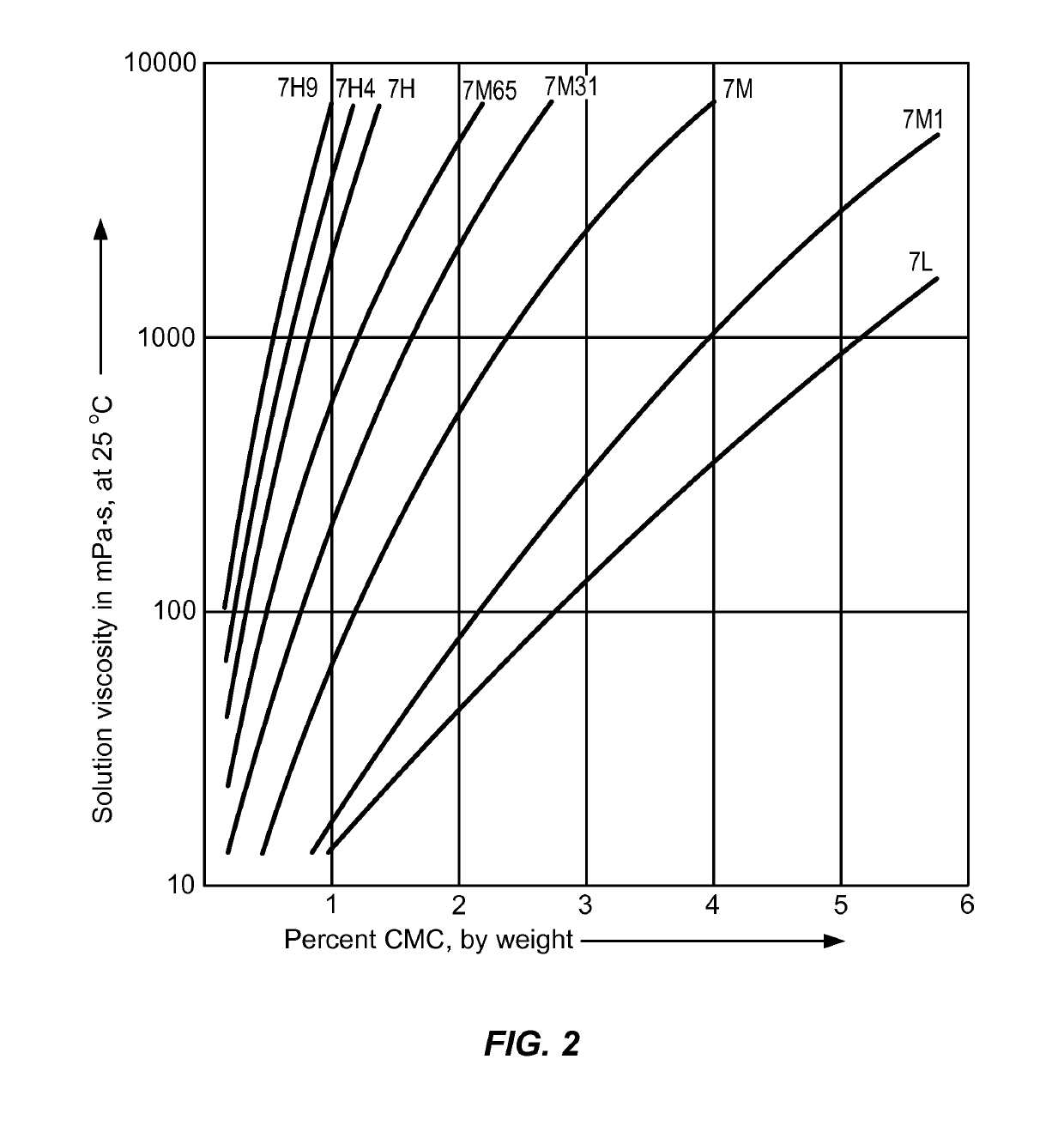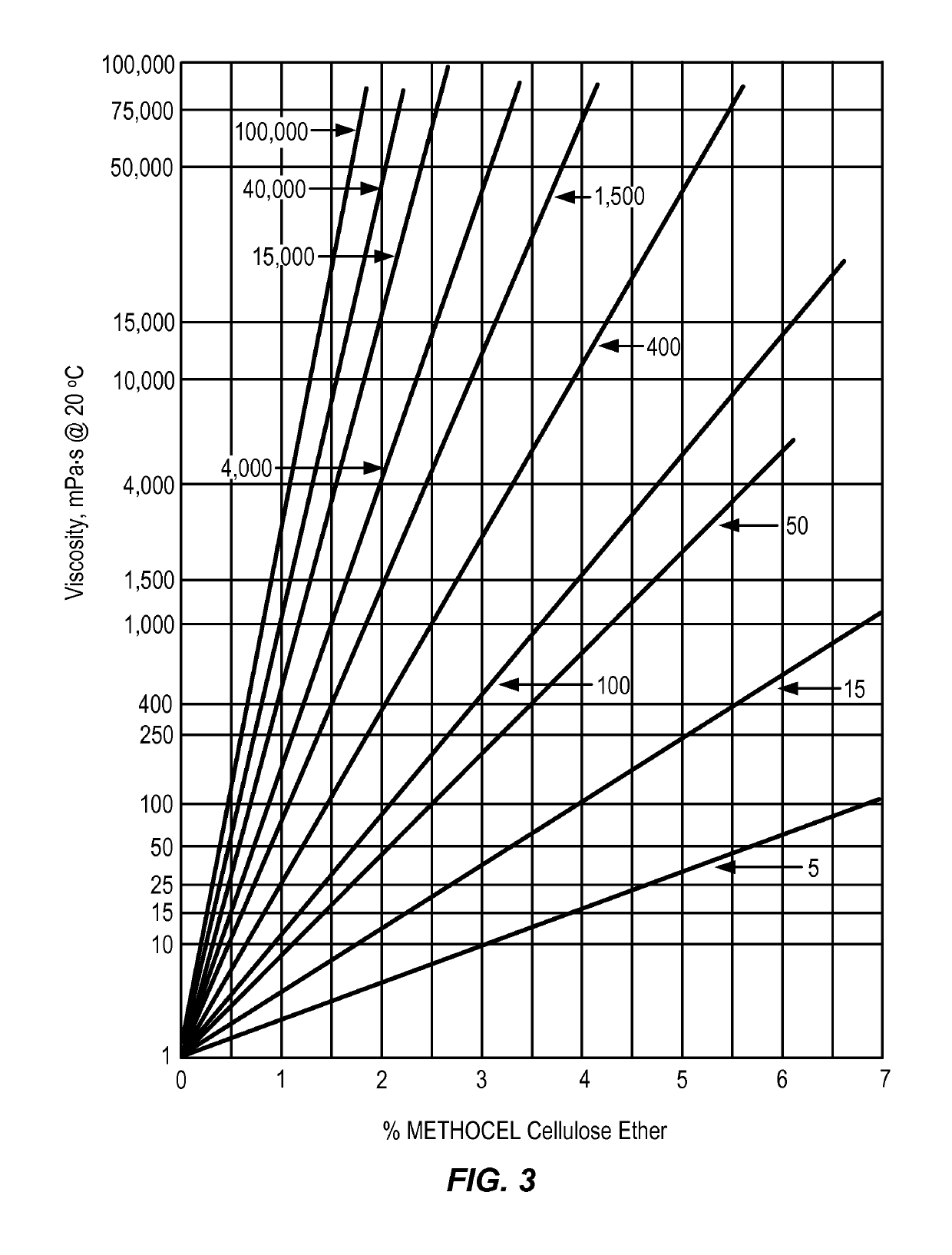Controlled release delivery devices for the treatment of otic disorders
a technology of otic disorders and delivery devices, which is applied in the direction of capsule delivery, aerosol delivery, microcapsule delivery, etc., can solve the problems of limiting the delivery of an active agent to the isolated microenvironment of the inner ear, affecting the quality of life of patients, etc., to achieve the effect of reducing the frequency of administration, and alleviating discomfor
- Summary
- Abstract
- Description
- Claims
- Application Information
AI Technical Summary
Benefits of technology
Problems solved by technology
Method used
Image
Examples
example 1
pH on Degradation Products for Autoclaved 17% Poloxamer 407NF / 2% Active Agent in PBS Buffer
[0357]A stock solution of a 17% poloxamer 407 / 2% active agent is prepared by dissolving 351.4 mg of sodium chloride (Fisher Scientific), 302.1 mg of sodium phosphate dibasic anhydrous (Fisher Scientific), 122.1 mg of sodium phosphate monobasic anhydrous (Fisher Scientific) and an appropriate amount of an active agent with 79.3 g of sterile filtered DI water. The solution is cooled down in an ice chilled water bath and then 17.05 g of poloxamer 407NF (SPECTRUM CHEMICALS) is sprinkled into the cold solution while mixing. The mixture is further mixed until the poloxamer is completely dissolved. The pH for this solution is measured.
[0358]17% poloxamer 407 / 2% active agent in PBS pH of 5.3. Take an aliquot (approximately 30 mL) of the above solution and adjust the pH to 5.3 by the addition of 1 M HCl.
[0359]17% poloxamer 407 / 2% active agent in PBS pH of 8.0. Take an aliquot (approximately 30 mL) of t...
example 2
Autoclaving on the Release Profile and Viscosity of a 17% Poloxamer 407NF / 2% Active Agent in PBS
[0365]An aliquot of the sample from example 6 (autoclaved and not autoclaved) is evaluated for release profile and viscosity measurement to evaluate the impact of heat sterilization on the properties of the gel.
[0366]Dissolution is performed at 37° C. in snapwells (6.5 mm diameter polycarbonate membrane with a pore size of 0.4 μm). 0.2 mL of gel is placed into snapwell and left to harden, then 0.5 mL is placed into reservoir and shaken using a Labline orbit shaker at 70 rpm. Samples are taken every hour (0.1 mL withdrawn and replace with warm buffer). Samples are analyzed for poloxamer concentration by UV at 624 nm using the cobalt thiocyanate method, against an external calibration standard curve. In brief, 204, of the sample is mixed with 19804, of a 15 mM cobalt thiocyanate solution and absorbance measured at 625 nm, using a Evolution 160 UV / Vis spectrophotometer (Thermo Scientific).
[0...
example 3
Addition of a Secondary Polymer on the Degradation Products and Viscosity of a Delivery Device Containing 2% Active Agent and 17% Poloxamer 407NF after Heat Sterilization (Autoclaving)
[0369]Solution A. A solution of pH 7.0 comprising sodium carboxymethylcellulose (CMC) in PBS buffer is prepared by dissolving 178.35 mg of sodium chloride (Fisher Scientific), 300.5 mg of sodium phosphate dibasic anhydrous (Fisher Scientific), 126.6 mg of sodium phosphate monobasic anhydrous (Fisher Scientific) dissolved with 78.4 of sterile filtered DI water, then 1 g of Blanose 7M65 CMC (Hercules, viscosity of 5450 cP @ 2%) is sprinkled into the buffer solution and heated to aid dissolution, and the solution is then cooled down.
[0370]A solution of pH 7.0 comprising 17% poloxamer 407NF / 1% CMC / 2% active agent in PBS buffer is made by cooling down 8.1 g of solution A in an ice chilled water bath and then adding an appropriate amount of an active agent followed by mixing. 1.74 g of poloxamer 407NF (Spect...
PUM
 Login to View More
Login to View More Abstract
Description
Claims
Application Information
 Login to View More
Login to View More - R&D
- Intellectual Property
- Life Sciences
- Materials
- Tech Scout
- Unparalleled Data Quality
- Higher Quality Content
- 60% Fewer Hallucinations
Browse by: Latest US Patents, China's latest patents, Technical Efficacy Thesaurus, Application Domain, Technology Topic, Popular Technical Reports.
© 2025 PatSnap. All rights reserved.Legal|Privacy policy|Modern Slavery Act Transparency Statement|Sitemap|About US| Contact US: help@patsnap.com



